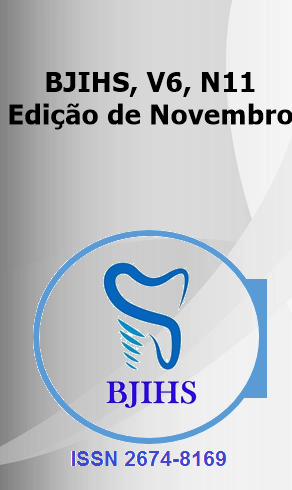Abstract
Objective: This study explores the capability of generative artificial intelligence platforms to generate realistic images of the knee, a complex anatomical region widely studied by healthcare professionals. Method: Using tools such as Midjourney, Leonardo.Ai, and BlueWillow, experiments were conducted with the prompt "Realistic image of the ligaments of a knee dissected for study." Result: Despite notable advancements, especially with Midjourney, the generated images lack precise anatomical details, often representing structures inaccurately. Conclusion: There are still significant limitations compromising the generation of images by artificial intelligence for anatomy learning.
References
Costa GBF, Costa GBF, Lins CCCSA. O cadáver no ensino da anatomia humana: uma visão metodológica e bioética. Rev Bras Educ Med. 2012;36:369-373.
Costa LF, Feijós AGS. Doação de corpos: estudo comparativo luso-brasileiro sobre a utilização do corpo humano para ensino e pesquisa. Anais do 5º Salão de Iniciação Científica; 2009. Porto Alegre: EDIPUCRS; 2009.
Braz PRP. Método didático aplicado ao ensino da anatomia humana. Anuário da produção acadêmica docente. 2009;3(4):303-310.
Ferreira TA. Estudo de neurofisiologia associados com modelos tridimensionais construídos durante o aprendizado. Biosci J. 2008;24(1):98-103.
Cyrino EG, Toralles-Pereira ML. Trabalhando com estratégias de ensino-aprendizado por descoberta na área da saúde: a problematização e a aprendizagem baseada em problemas. Cad Saúde Pública. 2004;20(3):780-8.
Goodfellow, I., Pouget-Abadie, J., Mirza, M., Xu, B., Warde-Farley, D., Ozair, S., ... & Bengio, Y. (2014). Generative adversarial nets. Advances in neural information processing systems, 27.
Chuquicusma, M. J., Hussein, S., Burt, J., & Bagci, U. (2018, April). How to fool radiologists with generative adversarial networks? A visual turing test for lung cancer diagnosis. In 2018 IEEE 15th international symposium on biomedical imaging (ISBI 2018) (pp. 240-244). IEEE.
Frid-Adar, M., Klang, E., Amitai, M., Goldberger, J., & Greenspan, H. (2018, April). Synthetic data augmentation using GAN for improved liver lesion classification. In 2018 IEEE 15th international symposium on biomedical imaging (ISBI 2018) (pp. 289-293). IEEE.
Chung, M. K., Luo, Z., Leow, A. D., Alexander, A. L., Davidson, R. J., & Hill Goldsmith, H. (2018). Exact combinatorial inference for brain images. In Medical Image Computing and Computer Assisted Intervention–MICCAI 2018: 21st International Conference, Granada, Spain, September 16-20, 2018, Proceedings, Part I (pp. 629-637). Springer International Publishing.
Nie, D., Trullo, R., Lian, J., Petitjean, C., Ruan, S., Wang, Q., & Shen, D. (2017). Medical image synthesis with context-aware generative adversarial networks. In Medical Image Computing and Computer Assisted Intervention− MICCAI 2017: 20th International Conference, Quebec City, QC, Canada, September 11-13, 2017, Proceedings, Part III 20 (pp. 417-425). Springer International Publishing.
Ho, J., Jain, A., & Abbeel, P. (2020). Denoising diffusion probabilistic models. Advances in neural information processing systems, 33, 6840-6851.
Ramesh, A., Pavlov, M., Goh, G., Gray, S., Voss, C., Radford, A., ... & Sutskever, I. (2021, July). Zero-shot text-to-image generation. In International conference on machine learning (pp. 8821-8831). Pmlr.
Kingma, D. P. (2013). Auto-encoding variational bayes. arXiv preprint arXiv:1312.6114.
Baumgartner, C. F., Koch, L. M., Tezcan, K. C., Ang, J. X., & Konukoglu, E. (2018). Visual feature attribution using wasserstein gans. In Proceedings of the IEEE conference on computer vision and pattern recognition (pp. 8309-8319).
Schneider WFH, Mangan PKV. Explorando Potencialidades e Limitações de Inteligências Artificiais Generativas no Desenvolvimento de jogos: usando Chatgpt e Midjourney para construir um jogo 2D. Diálogos e Perspectivas Interventivas (DIAPI). 2023;4:e19457-e19457.
Yildrim, Erdem. Comparative analysis of Leonardo AI, Midjourney, and Dall-E: AI's perspective on future cities. Urbanizm: Journal of Urban Planning & Sustainable Development. 2023;(28).
Lim, Bryan et al. Using generative artificial intelligence tools in cosmetic surgery: a study on rhinoplasty, facelifts, and blepharoplasty procedures. Journal of Clinical Medicine. 2023;12(20):6524.
Rohen JW, Yokochi C, Lütjen-Drecoll E. Color atlas of anatomy: a photographic study of the human body. Schattauer Verlag; 2006.
Frank H, Netter MD. Atlas of human anatomy. Elsevier Inc.; 2019.

This work is licensed under a Creative Commons Attribution 4.0 International License.
Copyright (c) 2024 Juliana Alves Oliveira Pereira, Lucas Dantas Maia Forte
